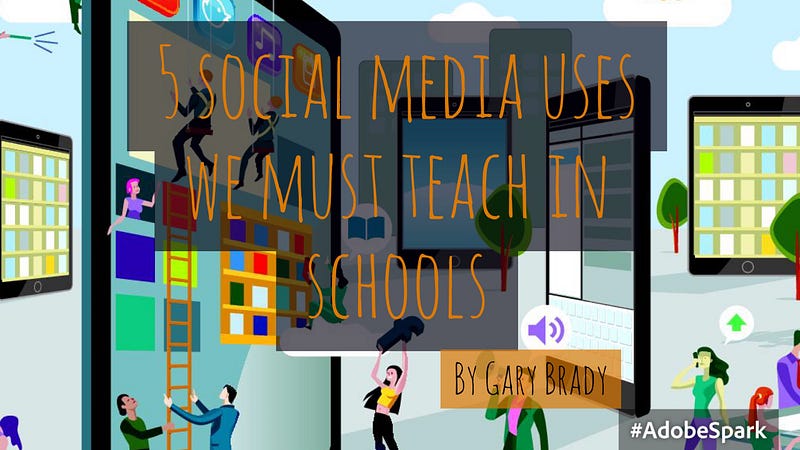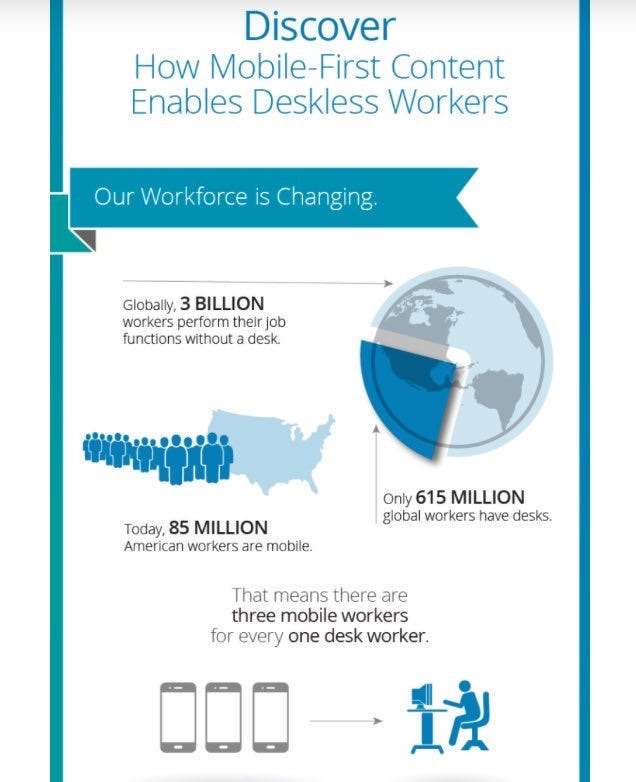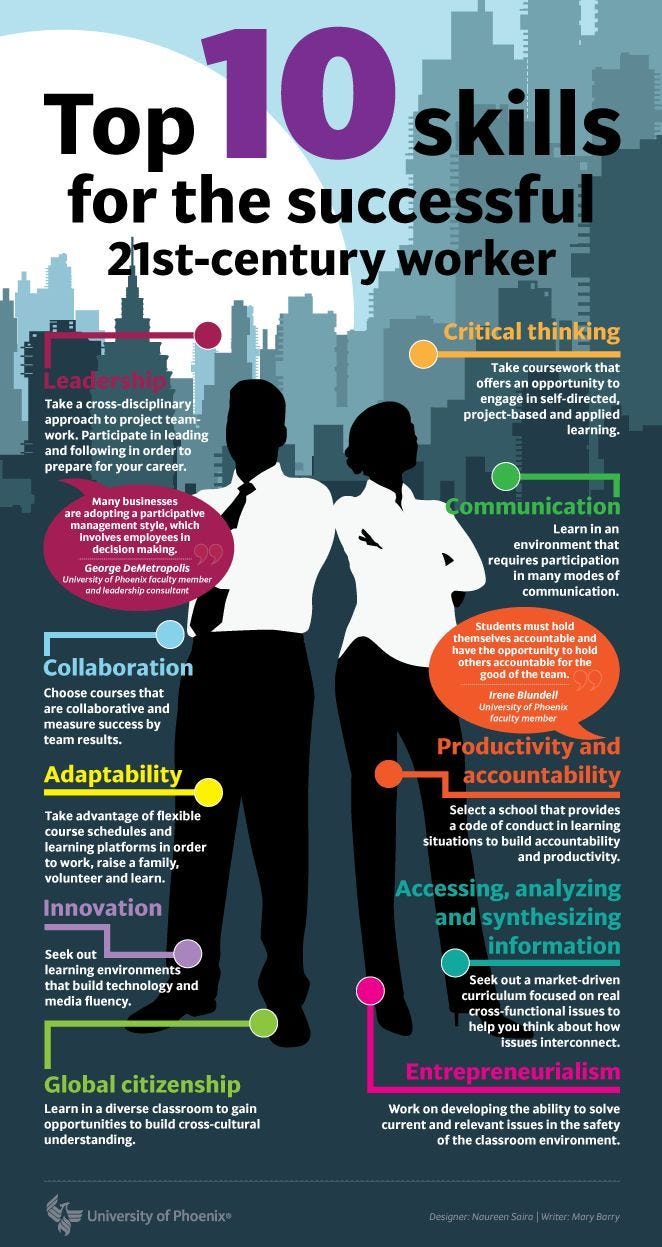5 social media uses we must teach in schools

Gallup conducted a poll titled “21st Century Skills and the Workplace” and found that 59% of the workforce “developed most of the skills they use in their current job outside of school.” This disconnect between schooling and practice calls into question the fundamental direction of education. In fact, it suggests that schools might be flying a little too close to the trees.
The reality of this is that if our current education system does not adjust its direction and altitude, then it might crash and burn.
If the divide between educational theory and workplace application continues to grow, then this will be the case. What if we are looking at a 75% discrepancy by 2020? This is plausible because the most significant areas of current job growth are primarily technology related. Specifically, programming and security, which are two areas where schools are the most dramatically off course.
Sadly, this discussion about the trajectory of American education is not a new one. In 2009, Bill Gates said that “education was the one sector of the economy so far the least affected by technology.” He went on to say that “ten years from now that won’t be the case.” Bill Gates might have been wrong. While we watch the global economy transform, American schools continue to resist change.
Believe it or not, some school districts are still banning mobile devices. No joke! Hey, it’s only been since 2008 that smartphones have been around. It’s not like we should expect school policies to adapt to a ubiquitous, world changing technology in just a decade or anything. I hope you are getting the hint of sarcasm that I’m using here.
The fact remains that the workforce is becoming more technology centered. More and more workers are working remotely. In fact, many of these remote workers are performing all of their core responsibilities with mobile. Today, 85 million American workers are mobile. Three billion workers world.... There are three mobile workers to every one desk worker in the world. In total, only 25% of the global workforce are working at desks. What are we trying to prove by anchoring students? what are we achieving by not embracing mobile in schools?

Unfortunately for students, public enemy number one for backward thinking schools is the social network. However, we can fix this! Here are 5 awesome social network uses that schools have to start explicitly teaching kids so that our education system can once again be relevant…
The Call-to-Action (CTA)
A call-to-action prompts an audience to take immediate action. Social networks are uniquely designed for this level of interactive audience engagement. By tasking students with the job of creating #call-to-action we are asking them to offload information in order to problem solve. This supports student creativity. They can practice this by creating actionable projects to help affect change in the world.
Professional/Personal Learning Network (PLN)
The #PLN relies on socially networked communications. Twitter is a key network where professionals network, but students should be encouraged to explore other mediums that suit their needs. PLN’s are great for offloading information for problem solving and development.
“App smashing”
Also known as app stacking, it involves switching between multiple apps in a single activity. App smashing is effective for both using mobile tools to manage time and multitask, as well as, conducting research with mobile. Social network apps are especially friendly to app smashing, and as a result, are tremendously efficient.
Content management
This involves collaboration and sharing through cloud technologies. Activities like eMagazine curation, blogging and vlogging involve critical social media talents. Allowing students to manage a YouTube channel or curate an eMagazine on Flipboard helps students develop content management skills.
Time management skills for a hyperconnected world
These skills develop from on-the-go access to work and communication with peers and teachers. These are community based management skills. They are reliant on connectedness because in today’s workplace we have to manage more than just ourselves. Cloud technologies like o365 and a multitude of apps allow students to manage, collaborate and organize in 21st century workplace ways. Apps like Remind connect schools, students and families in ways that take advantage of this.
All 5 of these suggestions involve sharing, curating, content creation, ownership and usage of open resources. This is what the social network is all about. If you have your students relying on USB’s then you may want to rethink your #EdTech philosophy. Organizations have embraced social, mobile, and the cloud, so should we!
And so to wrap it up…
If we give students access to, and experiences with the devices that they will use in the workplace and their daily lives, then they can later transfer the learning to their necessary work applications. To achieve this we have to focus on…
- using mobile tools to manage time and multitask
- conducting research with mobile
- supporting creativity
- networked communications
- offloading information in order to problem solve
Most importantly, we should not be forcing apps or platforms on students. We need to give them choice, offer options, opportunities and alternatives. Workplace professionals have learned how BYOD policies can have a positive impact on productivity because choice breeds engagement!
Education policy has been historically conservative in implementing change. At times, the conservative approach has been beneficial because the alternative fads and trends that emerged were not sustainable. However, mobile technology and social networking are not fads or trends. Over the past decade they have combined in a synergistic way that has transformed the global workforce and economy.
Our nations young need to be trained in the appropriate on-the-go usage of mobile and social so that they can contextualize and draw connections between school and the workplace.

I hope that you will like or comment on this article. I hope to encourage an open and honest conversation about digital learning that will lead to a brighter future for our learners. Remember, students are our greatest resource!
You need to be a member of School Leadership 2.0 to add comments!
Join School Leadership 2.0